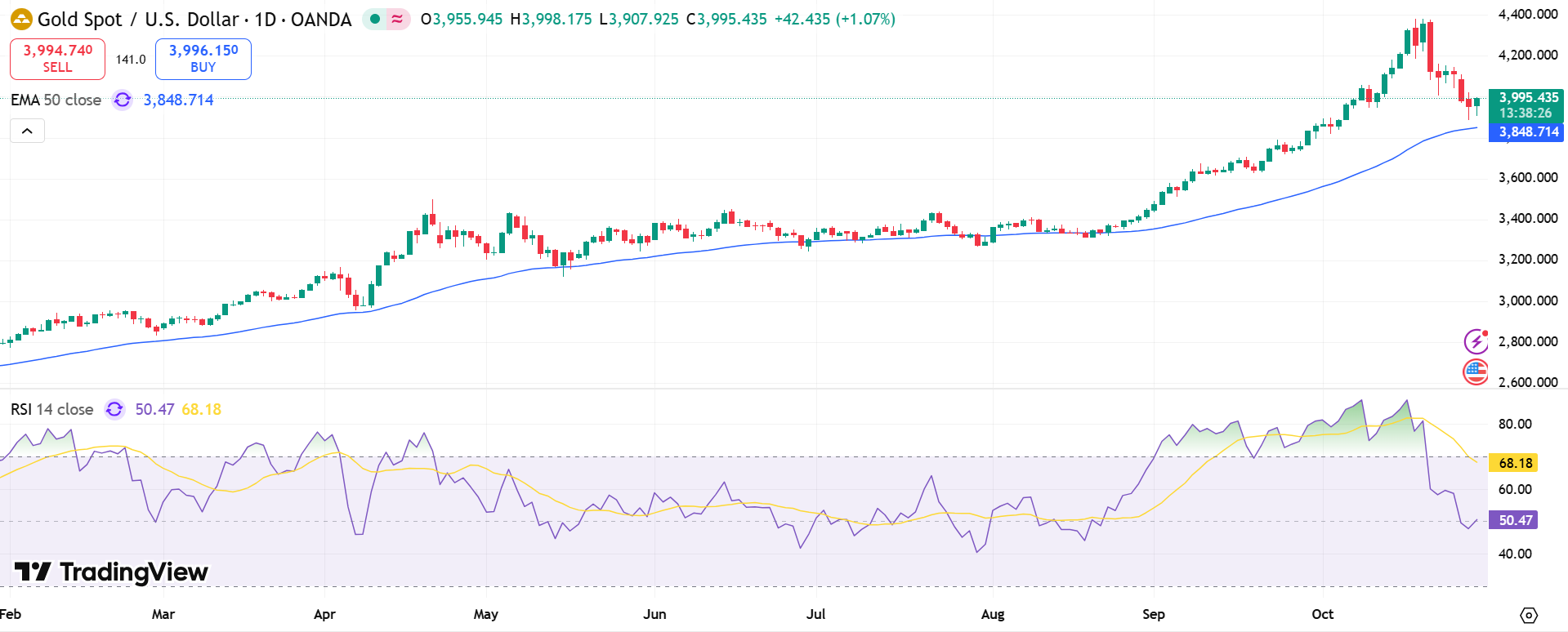Gold prices continued their slide on Tuesday, deepening the previous session’s losses as improving U.S.-China trade relations reduced demand for the precious metal as a haven.
At 08:45 ET (12:45 GMT), spot gold slipped 1.6% to $3,920.77 per ounce, while U.S. gold futures dropped 2.1% to $3,934.51. This follows Monday’s steep 3% decline, which pushed gold to its lowest level in over two weeks. Prices have now tumbled nearly 10% from last week’s all-time high of $4,381.29 per ounce.
The downward momentum reflects optimism following reports that Washington and Beijing reached a preliminary trade framework over the weekend in Kuala Lumpur. The agreement, aimed at averting new tariffs, could lead to a breakthrough when President Donald Trump meets Chinese President Xi Jinping later this week.
Such optimism has softened gold’s traditional role as a hedge against geopolitical risks. Analysts at ING noted, “Even after this correction, gold remains up more than 50% year-to-date, supported by strong ETF inflows and central bank purchases.”
Fed Rate Decision in Focus
Investors are now turning their attention to the Federal Reserve’s two-day policy meeting, which concludes Wednesday. The central bank is widely expected to announce a 25-basis-point rate cut, its latest move in a series of easing measures designed to support the U.S. economy.
Typically, lower interest rates make gold more attractive by reducing real yields. However, analysts suggest much of the potential impact is already priced in, leaving limited near-term upside.
Key drivers to watch this week:
- Federal Reserve policy announcement on Wednesday
- Upcoming U.S. jobs data and inflation reports
- Central bank gold purchasing trends
These factors are expected to determine whether gold stabilizes near current levels or continues its descent below $3,900.

Copper, Silver, and Platinum Decline
The broader metals market mirrored gold’s weakness.
- Silver futures edged down 0.6% to $46.46 per ounce.
- Platinum fell 2.1% to $1,550.45 per ounce.
- Copper prices eased after hitting a record high of $11,052 per ton on Monday, with LME futures down 0.6% to $10,952.95 and U.S. futures off 0.7% to $5.13 per pound.
Despite the pullback, analysts remain bullish on copper, citing supply disruptions and improving trade sentiment. “With tightening supply and renewed optimism around global manufacturing, copper’s long-term outlook remains constructive,” ING added.


